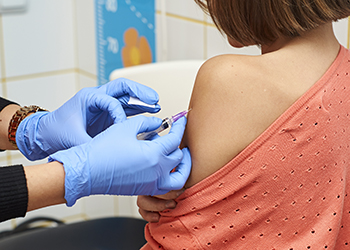
Human Papilloma Virus (HPV) is a large family of viruses, approximately 40 of which are transmitted sexually. Of these forty HPV subtypes, 15 are considered high-risk and can lead to the development of cervical cancer. The other subtypes of HPV are considered low-risk and include types 6 and 11 which cause condyloma acuminatum or anogenital warts (AGWs).
Genital warts are one of the most commonly-reported sexually transmitted infections worldwide. Recurrence is common and many patients require several rounds of treatment. There are two vaccines available in Canada to protect against HPV disease: Gardasil®9; and Cervarix®. Both vaccines contain HPV types 16 and 18, the high-risk serotypes associated with cervical cancer, but Gardasil®9 provides additional protection against genital warts as it also protects against HPV types 6 and 11.
PopData will be linking Ministry of Health data for a new study led by Fawziah Lalji, Professor in the Faculty of Pharmaceutical Sciences at the University of British Columbia (UBC). The study builds on previous work by Professor Lalji which evaluated the incidence of genital wart infections in 2003, prior to the introduction of the HPV vaccine, which was initially introduced into Grade 6 and Grade 9, then became a Grade 6 alone program.
“We will be looking at the incidence of AGW infection since the introduction of the vaccine program in British Columbia,” says Professor Lalji. “Many of the girls who would have been vaccinated are now young adults and sexually active. “The vaccine has been privately available to adult women through pharmacies and we can now evaluate its uptake and impact on incidence of AGW and associated healthcare use.”
Gina Ogilvie, Professor of Medicine at UBC, is co-Principal Investigator on the project, which is funded by the Canadian Institutes for Health Research.